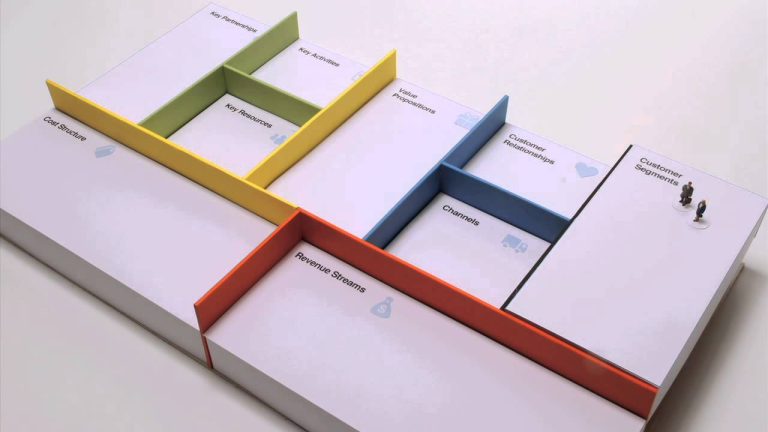Contenidos
The business model canvas
Business model canvas
The business model canvas, better known as Business Model Canvas, through which to develop new business models or document existing ones. Its creator was Alex Osterwalder in the first decade of the 11th century.
The objective of the canvas is to answer strategic questions, focusing on the business model, as the what, and iterating towards the how and who should be the basis on which to develop it.
It allows us to know and analyze each of the processes and people involved in the creation of value, understanding value as something that can serve to meet a need of a person or company.
One of the most complex parts of understanding the concept of value is being able to identify what your end user is willing to pay for and what is capable of solving one or more of their needs.
Without a doubt, it must be made clear that each customer segment will require a different value proposition, as well as specific responses to each of the other pillars of the business model.
Value proposition canvas
Business Model Canvas, translated as business model canvas, is a strategic management template for developing new business models or documenting existing ones. It is a visual graphic with elements that describe product or value propositions of the company, infrastructure, customers and finances. It helps companies align their activities by illustrating potential trade-offs.
The canvas business model was initially proposed by Alexander Osterwalder[1] based on his earlier work on the ontology of business models. Since the publication of Osterwalder’s work in 2009, new canvases for specific niches have appeared, such as the Lean Canvas.
1. – Key activities: these are the most important tasks in the execution of a company’s value proposition. An example would be the creation of an efficient supply chain to reduce costs.
2. – Key resources: these are the means necessary to create value for the customer. They are considered an asset for a company, which needs them to sustain and support the business. These resources could be human, financial, physical and intellectual.
Business model
Business Model Canvas, translated as business model canvas, is a strategic management template for developing new business models or documenting existing ones. It is a visual graphic with elements that describe product or value propositions of the company, infrastructure, customers and finances. It helps companies align their activities by illustrating potential trade-offs.
The canvas business model was initially proposed by Alexander Osterwalder[1] based on his earlier work on the ontology of business models. Since the publication of Osterwalder’s work in 2009, new canvases for specific niches have appeared, such as the Lean Canvas.
1. – Key activities: these are the most important tasks in the execution of a company’s value proposition. An example would be the creation of an efficient supply chain to reduce costs.
2. – Key resources: these are the means necessary to create value for the customer. They are considered an asset for a company, which needs them to sustain and support the business. These resources could be human, financial, physical and intellectual.
Wikipedia
It has always been said that capturing things visually helps us to clarify things and understand them better. The business model canvas summarizes, on a single sheet of paper, the key aspects of your company. Can you imagine being able to see at a glance all the parts that shape and influence your business?
The business model canvas is a fundamental tool in the development of any company. It helps you to know your business and its key aspects, something necessary before making any important decision or starting any marketing strategy.
The Business Model Canvas makes it easier, as it tells us what questions to ask ourselves about the 9 key elements that we have to analyze individually in order to get an overview of our current business.
We have to take into account the synergies we can count on with our partners: Who are our main partners? What do they do? And above all, what can we achieve with them?

